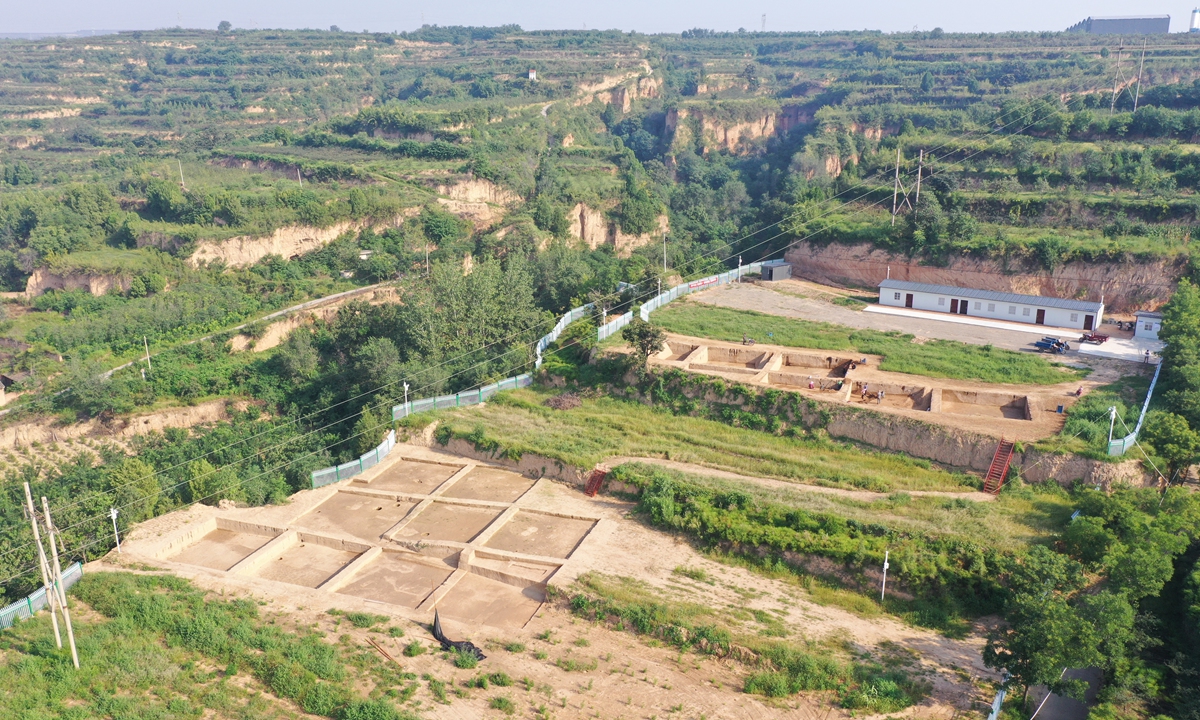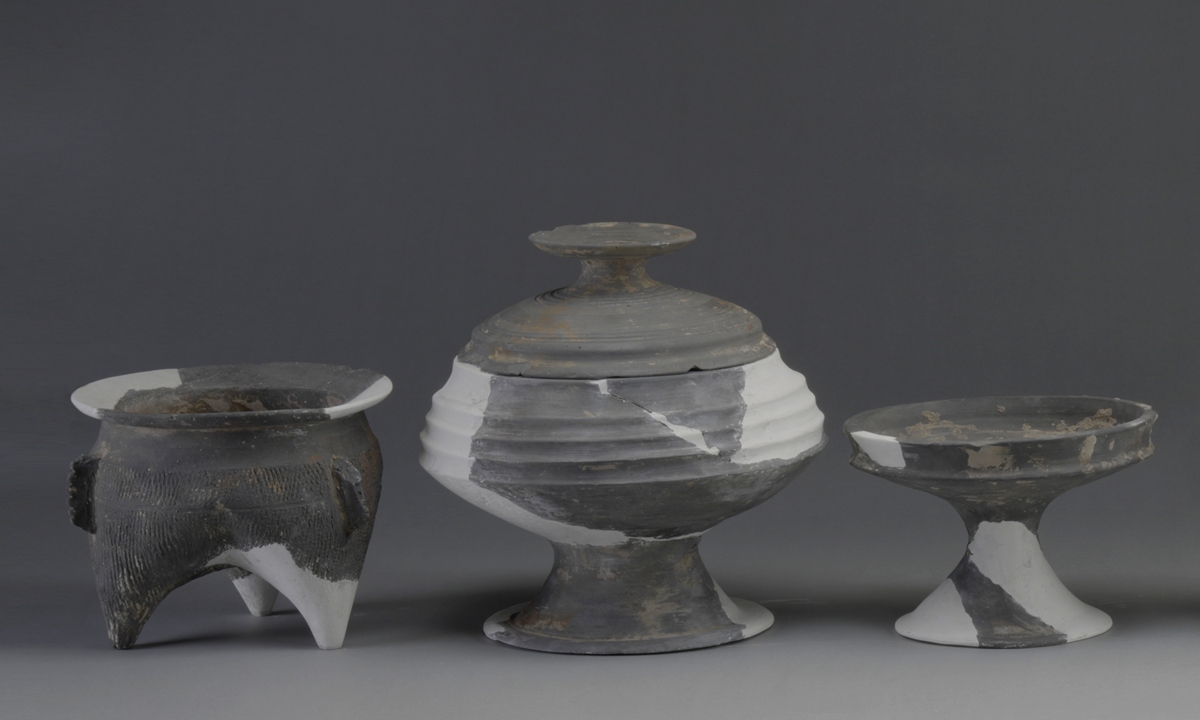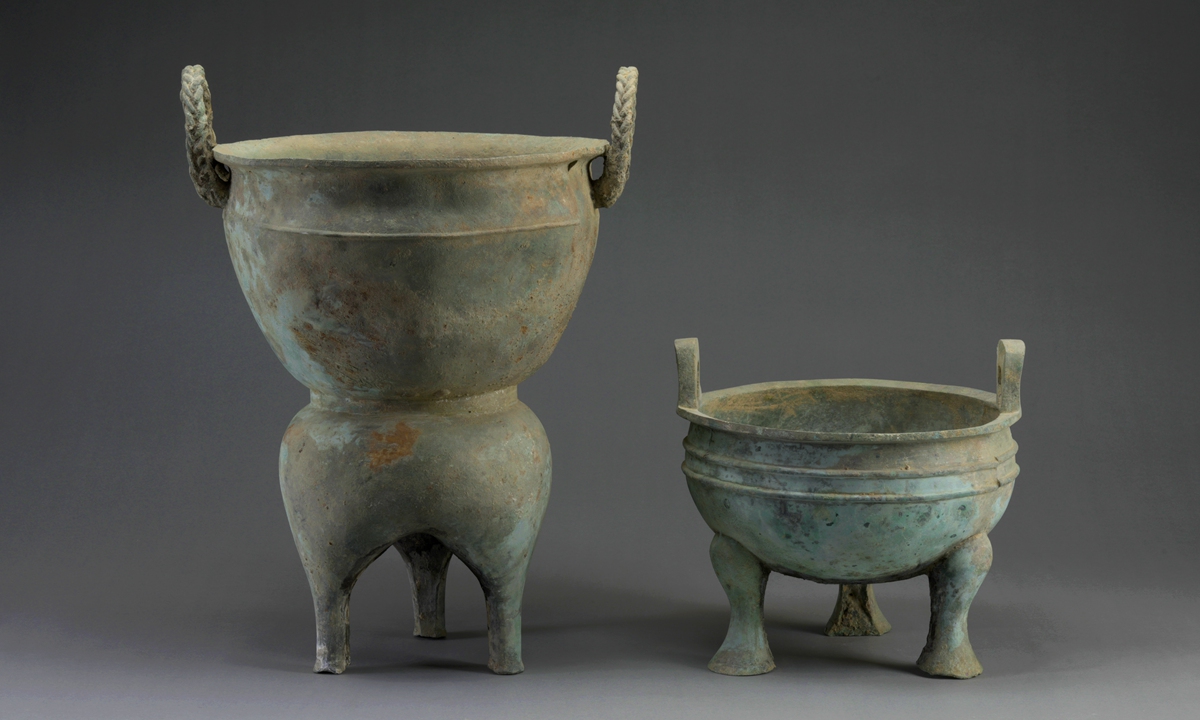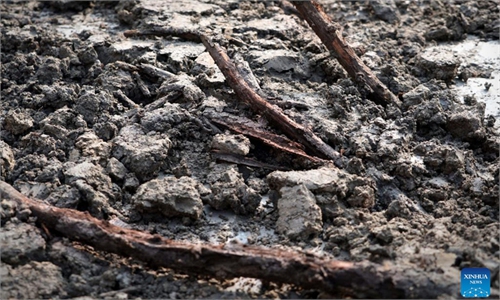ARTS / CULTURE & LEISURE
2,000-year-old ruins provide insight into China's ancient feudal system

Excavation scene of the ruin site Photo: Courtesy of Shaanxi Academy of Archeology
Roughly 800,000 square meters in size, the ruins site, which is divided into different areas such as a living area and grand cemetery, spans the time from the Western Zhou Dynasty (1046BC-771BC) to the Eastern Zhou Dynasty (770BC-256BC).
The tombs were built during the late Western Zhou Dynasty to early Eastern Zhou Dynasty, researchers from the Shaanxi Academy of Archaeology told the Global Times on Monday.
The tombs are uniform in shape, with the largest measuring 36.6 meters in length. Archaeologists found one to three human skeletons that were buried alive along with the deceased in six of the tombs. Some fragments of pottery wares as well as carts and the skeletons of horses were also unearthed from the tombs.

Cultural relics unearthed from the tombs Photo: Courtesy of Shaanxi Academy of Archeology
Among these discoveries, some bronze wares were buried with the carts, to include a bronze ding (a ritual food vessel that stands on tripod legs and has two handles) and bronze dagger-axe. The inscriptions on these bronze wares reveal that the graves and cultural relics belonged to the Jing family, a noble family with important officials in the Zhou Dynasty government.Judging by the tombs' age, design, burial objects and inscriptions, archaeologists speculated that the region around the ruins site was originally a fiefdom belonging to the Jing family.

Cultural relics unearthed from the tombs Photo: Courtesy of Shaanxi Academy of Archeology
According to historical records, the Jing family lived in eastern China and then after several migrations was enfeoffed with the land around the ruins site by the Zhou.Researchers at the academy pointed out that the ruins site is a rare example of a Northwest China fiefdom that existed during the late Western Zhou Dynasty and the early Eastern Zhou Dynasty, which means it holds great significance for research into the dynasties' feudal system, politics and geography.




